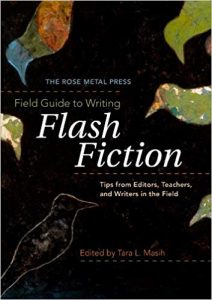
The SmokeLong Quarterly series Flash in the Classroom explores how creative writing instructors use flash fiction to inspire their students. If you use flash fiction in your classroom, we’d love to hear your ideas. Also, check out the other articles in this series.
_______________________________
by Sarah Shotland
For ten years, I’ve been teaching creative writing in jails, prisons, and drug treatment centers through the Words Without Walls program at Chatham University, and I’ve come to rely on flash as my most trusted teaching tool.
Many people think there’s nothing but time in a jail or rehab, but my students are busy. Court dates, meetings with lawyers, endless doctors’ appointments, jobs inside the facility, and strict “lights-out” means that class time is the only reliable time I can budget for student reading. Everything we do needs to be done together. Time is of the essence: use short pieces. These spaces require course design that has a progression of scope and sequence, but each class must also stand on its own. Students must be able to drop in and out of class, and still gain valuable information and writing time. These are practical concerns, and flash is an obvious solution, but I’ve come to see the form as valuable for so much more than its brevity and logistical usefulness.
 Flash fiction is best when it is used to compress intense material. In her essay in the Rose Metal Press Field Guide to Flash Fiction, Sherrie Flick likens it to “the flash in a pan.” Others compare it to a sucker-punch. Quick, fast, effective, the flash form is powerful because it lacks context, exposition, lengthy description. Its power is in its ability to drop the reader into a high-stakes, high-intensity situation with urgency and immediacy and deliver substance through subtext, tone, and a poet’s attention to language.
Flash fiction is best when it is used to compress intense material. In her essay in the Rose Metal Press Field Guide to Flash Fiction, Sherrie Flick likens it to “the flash in a pan.” Others compare it to a sucker-punch. Quick, fast, effective, the flash form is powerful because it lacks context, exposition, lengthy description. Its power is in its ability to drop the reader into a high-stakes, high-intensity situation with urgency and immediacy and deliver substance through subtext, tone, and a poet’s attention to language.
The form and power of flash fiction in many ways mirrors the experience of incarceration. Jail is a high-stakes, high-intensity containment. I’m forever telling my students that the content of their stories needs to fit the container of their stories, and for those who are writing about confinement, isolation, surveillance, or constraint, the flash form adds a formal subtext to their narratives that elevates their work. Every moment is important in jail, every sentence in court matters. The precise wording of a defense attorney’s statement is the difference between imprisonment and freedom. Students in these spaces inherently understand the importance of small choices, and using flash allows students to participate in discussions about diction in complex and meaningful ways. The low-stakes atmosphere of the creative writing classroom can act as a safe and non-threatening entry point into more consequential conversations about language.
Flash also invites students to write a single moment rather than a tangled series of events. For people whose lives are extraordinarily complex and opaque, this permission can be transformative in the writing process. Rather than needing to know all the answers, a writer can simply dive deep into a single experience.
 “The Solutions to Brian’s Problems,” from Bonnie Jo Campbell’s collection American Salvage, is a piece I’ve found particularly effective. Through seven numbered sections, readers meet Brian, the long-suffering husband of Connie, mother to his daughter and a meth addict. Each section offers a “solution” to Brian’s problem—Connie. As the story progresses, readers see the desperation, frustration, resignation, and love Brian experiences when dealing with his erratic and dangerous wife. The irony of the story, of course, is that there is no solution to Connie, and yet, Brian will never stop trying to find peace.
“The Solutions to Brian’s Problems,” from Bonnie Jo Campbell’s collection American Salvage, is a piece I’ve found particularly effective. Through seven numbered sections, readers meet Brian, the long-suffering husband of Connie, mother to his daughter and a meth addict. Each section offers a “solution” to Brian’s problem—Connie. As the story progresses, readers see the desperation, frustration, resignation, and love Brian experiences when dealing with his erratic and dangerous wife. The irony of the story, of course, is that there is no solution to Connie, and yet, Brian will never stop trying to find peace.
The piece as a whole is short, but each section serves as an additional compression, and students use this to their advantage, narrowing in on single moments in their lives they can isolate as important and linked, if not always causal or cohesive. It also allows students to troubleshoot problems in their own lives without having to come to definitive answers. Rather, the sections encourage students to consider options, to go through the intellectual exercise of generating possibilities. Generating possibility and exercising imagination might be the most useful skills that fiction promotes in a jail or prison. In a place where the possibilities feel so scarce and the outcomes look so bleak, fiction offers students practice in the art of hope and the skill of imagining new futures.
Using flash also allows me to assign multiple readings of the same piece so that my students begin practicing close reading and deep analysis. Thanks to brevity, I can ask students to write multiple responses to the same text. The numbered sections of Campbell’s story give me a quick and obvious prompt for students to model, but it is the point of view that often leads to the most powerful responses.
My students intuitively understand the power of point of view. Every witness who takes the stand sheds new light on a criminal case. Your point of view, my point of view, the jury, the judge—who tells the story, the scope of their vision—all crucial.
Many of my students are the Connies of their family, and so I tell students to write from your husband’s point of view. Write from your child’s point of view. Pick a person who had an upfront view to your addiction or violence. Write from their perspective.
My students in drug treatment write heartbreaking stories witnessing addiction through their children’s eyes. Using the craft element of point of view to gain new perspective builds their empathetic muscles. Those who treat addiction often describe it as a self-serving disease—it blinds a person to how their life impacts the lives of others. It’s a powerful example of how the craft of writing and the art of being human intersect. Fiction writers are experts in empathy. Developing empathy and a tolerance to diverse viewpoints through creative writing is a much easier way into self-awareness and accountability than a truth-and-reconciliation style interview. Allowing students to fictionalize events gives them practice in a safe and low-stakes environment that can then translate to “real” life.
Here’s an example from a student modeling Campbell’s story, writing from her daughter’s point of view:
- When I hear the bathroom door click, lock, I know I better think about dinner. Dylan is going to be hungry soon, and my mom will be in there. When she goes in there with her purse, I take care of dinner. Maybe she will eat with us one night, if I make hot food and not just the cereal. 2.
- My teacher at school says that we can tell her anything, but I don’t think I should tell her about my mom. If I do, Dylan might have to go someplace without me, without his transformers, without our bunkbeds. Last year, Lauren had a CYF case. She lives in a huge gym now where the girl next to her pees on a cot every night. We love cereal. 3.
- When my mom comes out of the bathroom, her face weighs more. Her eyes are puffy. People always say we have the same eyes, but we don’t. Not when she comes out of the bathroom.
After reading this piece to the group, the writer stopped. “I don’t want to be Connie anymore,” she said. Just like that—in a flash—she understood the world and her place in it differently.
That’s the possibility of the form in classrooms like mine. I use flash fiction in almost all my classrooms—on my university campus and off—but there is a potency in my classrooms off-campus that flash matches. When I walk into a classroom in a jail, my students are looking for something urgent, something with an intensity that rises to match their circumstances. Flash fiction offers them a way to harness that urgent intensity, to render it quickly and carefully, and to share it with readers who might understand them just a little bit better after a brief encounter with their stories.
__________________________________
Sarah Shotland is the author of the novel Junkette, and a playwright whose work has been produced in theaters nationally and internationally. She is the co-founder and Program Director of Words Without Walls, which brings creative writing classes to jails, prisons, and drug treatment centers in Pittsburgh. Her work has appeared in Creative Nonfiction, Baltimore Review, Proximity, and elsewhere. She teaches in the MFA program at Chatham University.
Donate to Words Without Walls.


 The core workshop of SmokeLong Fitness is all in writing, so you can take part from anywhere at anytime. We are excited about creating a supportive, consistent and structured environment for flash writers to work on their craft in a community. We are thrilled and proud to say that our workshop participants have won, placed, or been listed in every major flash competition. Community works.
The core workshop of SmokeLong Fitness is all in writing, so you can take part from anywhere at anytime. We are excited about creating a supportive, consistent and structured environment for flash writers to work on their craft in a community. We are thrilled and proud to say that our workshop participants have won, placed, or been listed in every major flash competition. Community works.